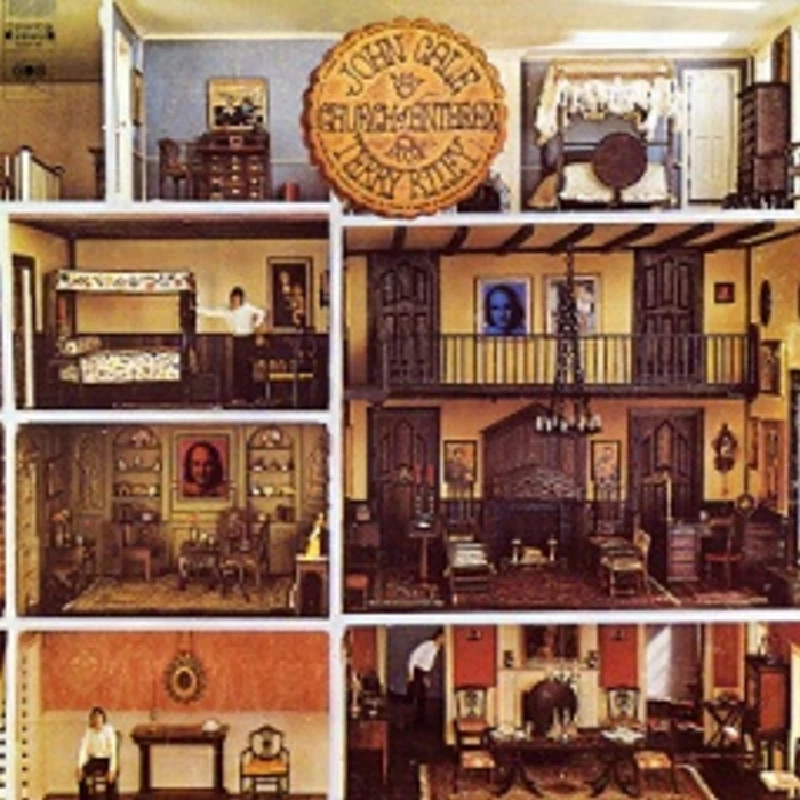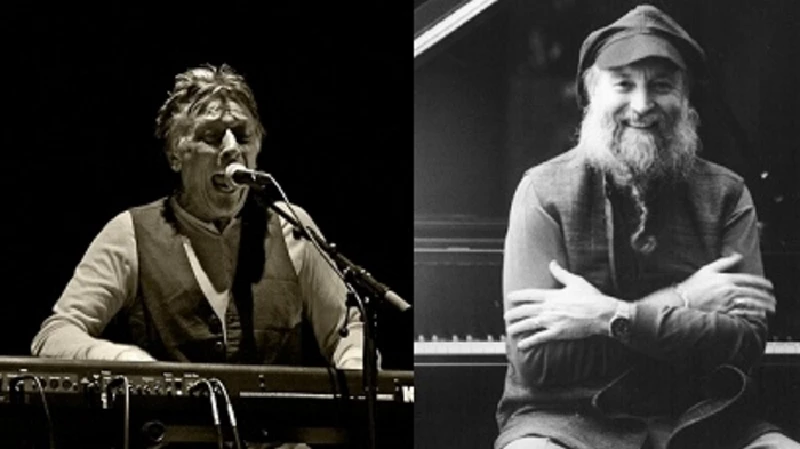John Cale / Terry Riley - Church of Anthrax
by Jon Rogers
published: 9 / 7 / 2014

Label:
Select Label
Format: N/A
intro
Jon Rogers reflects on Velvet Underground multi-instrumentalist John Cale and minimalist composer Terry Riley's 1971 avant-garde collaboration 'Church of Anthrax', which has recently been re-released
The prospect of a collaboration between the former Velvet Underground multi-instrumentalist John Cale and minimalist composer Terry Riley must have been an avant-gardist's dream come true in February 1971 when the album was originally released. Both had gained attention as members of La Monte Young's experimental drone outfit the Theatre of Eternal Music with the likes of Tony Conrad and Angus MacLise with Riley going on to widespread attention with his groundbreaking minimalist work 'In C' in 1964. He then cemented his reputation further still five years later with the improvisational 'A Rainbow in Curved Air'. Cale, meanwhile, had gone off and formed the Velvet Underground with Lou Reed and continued his aural assault. While both were strongly linked to the avant-garde they also had wide-ranging music influences. Along with the likes of John Cage, Riley was taken with the likes of Miles Davis and John Coltrane as well as Indian classical vocalist Pandit Pran Nath. Cale was also drawn to a rock aesthetic as well as more conventional song writing styling. John McClure, the director of CBS Masterworks, played matchmaker to the pair and, according to Cale's autobiography 'What's Welsh for Zen', had big plans for the label, wanting budgets equivalent to their pop and rock acts and aimed to bring Riley to wider attention, seeing a collaboration as the starting point to do that. The album though suffered a long gestation period - and no doubt part of the problem - being well over eighteen months from the first recording session to the record finally hitting the shops, with the tracks being recorded here and there in fits and starts. Cale and Riley first went into Columbia's 30th Street Studios - where Miles Davis had recorded his groundbreaking jazz albums 'Kind of Blue' and, later, 'Bitches Brew' - on 18 May 1969 and laid the groundwork for what would become the closing track 'The Protégé' and the only piece that would contain lyrics 'The Soul of Patrick Lee', as well as a track entitled 'October Procession' which is still to see the light of day. The pair joined up ten days later to record what would become the album's prominent pieces - 'The Hall of Mirrors In the Palace of Versailles', 'Ides of March' and the title track. An insight into how the two musicians worked together on the project is given by Riley in Ritchie Unterberger's day-by-day account of the Velvet Underground 'White Light/White Heat': "We liked to be in the moment in the studio. We were improvising a lot of the tracks. I don't remember any charts for any of these pieces. I would play something or John would play something, and then we'd build a piece on that. I really liked the sessions and I enjoyed working with John a lot." Riley then went on to cite 'Ides of March' and 'Hall of Mirrors' as particular favourites. Then for some unknown reason there is a delay of nine months before Cale's friend Adam Miller steps into the studio to overdub the lyrics on 'The Soul of Patrick Lee'. While the actual recording sessions go well, the mixing caused friction between the two, and Riley ultimately walked away from the project as he thought he was being sidelined with his musical involvement being obscured in the mix - something Cale in his autobiography strongly denied. The album was finally finished in mid-1970, but for some inexplicable reason the tapes simply gatheedr dust for around six months before CBS finally got round to actually releasing the record - sometime after Cale's debut solo album 'Vintage Violence' had seen the light of day, although it had been recorded after 'Church of Anthrax'. The problem, largely, with the final release is perhaps not so much what it contains - and the album has much to commend it - but more what it could have been. It could have been so much more with neither Cale nor Riley really pushing the boundaries. Certainly, apart from the rather out of place 'The Soul of Patrick Lee', which is rather conventional, the instrumental pieces sit firmly outside conventional notions of popular music. But still remain far less challenging than the more celebrated work of either musician. With the meeting of Cale and Riley together the listener would be expecting fireworks and some highly inventive, challenging playing. Instead it falls rather between the two sides. Too conventional for the avant-gardists, too unique for a rock audience and ultimately it ends up satisfying neither camp. That said, there is quite a bit there of interest - the interplay between the two is quite special with either one feeding off the other and there is plenty there to maintain interest and keep the audience coming back for a repeat listen. But ultimately, the listener is left with the overriding impression of things that could have been.
Track Listing:-
Picture Gallery:-

most viewed articles
current edition
Screamin' Cheetah Wheelies - Sala Apolo, Barcelona, 29/11/2023 and La Paqui, Madrid, 30/11/2023Anthony Phillips - Interview
Difford and Tilbrook - Difford and Tilbrook
Rain Parade - Interview
Oldfield Youth Club - Interview
Autumn 1904 - Interview
Shaw's Trailer Park - Interview
Cafe No. 9, Sheffield and Grass Roots Venues - Comment
Pete Berwick - ‘Too Wild to Tame’: The story of the Boyzz:
Chris Hludzik - Vinyl Stories
previous editions
Microdisney - The Clock Comes Down the StairsWorld Party - Interview
Heavenly - P.U.N.K. Girl EP
Michael Lindsay Hogg - Interview
Ain't That Always The Way - Alan Horne After The Sound of Young Scotland 2
World Party - Interview with Karl Wallinger
Joy Division - The Image That Made Me Weep
Dwina Gibb - Interview
Prisoners - Interview
Steve Harley - Interview
most viewed reviews
current edition
Marika Hackman - Big SighSerious Sam Barrett - A Drop of the Morning Dew
Rod Stewart and Jools Holland - Swing Fever
Loves - True Love: The Most of The Loves
Ian M Bailey - We Live in Strange Times
Paul McCartney and Wings - Band on the Run
Autumn 1904 - Tales of Innocence
Roberta Flack - Lost Takes
Banter - Heroes
Posey Hill - No Clear Place to Fall
Pennyblackmusic Regular Contributors
Adrian Janes
Amanda J. Window
Andrew Twambley
Anthony Dhanendran
Benjamin Howarth
Cila Warncke
Daniel Cressey
Darren Aston
Dastardly
Dave Goodwin
Denzil Watson
Dominic B. Simpson
Eoghan Lyng
Fiona Hutchings
Harry Sherriff
Helen Tipping
Jamie Rowland
John Clarkson
Julie Cruickshank
Kimberly Bright
Lisa Torem
Maarten Schiethart